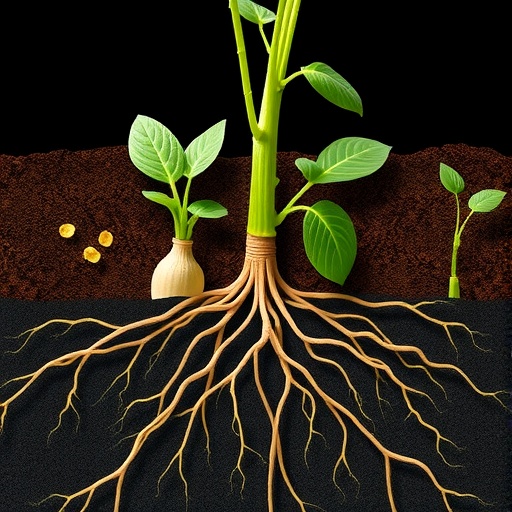Researchers have successfully used three-dimensional live imaging to track the developmental process of lateral roots in plants, providing new insights into how plants generate fresh meristematic tissue. This discovery advances our understanding of one of the most fundamental mechanisms in plant biology and could eventually open the door to technologies that artificially regulate plant growth by altering root system architecture. The study was published online in Development on August 10 (Vol. 143, Issue 18), and video clips of the live imaging were selected as the journal’s Featured Movie of the issue.
The research team consisted of Professor Hidehiro Fukaki from Kobe University’s Graduate School of Science, Project Assistant Professor Tatsuaki Goh of Kobe University (currently Assistant Professor at the Nara Institute of Science and Technology), as well as collaborators from the University of Nottingham and the University of Montpellier. Their combined expertise in plant developmental biology and imaging technology enabled them to visualize, for the first time, the precise sequence of events that govern lateral root formation in the model plant Arabidopsis thaliana.
Plants build root systems that are finely adapted to their environment by generating new branched roots from pre-existing ones. Root systems are composed of the primary root, which originates from the embryonic radicle and is the first root to grow after germination; lateral roots, which develop from specific internal tissues within primary or other roots; and adventitious roots, which arise from non-root tissues such as stems or leaves. While each plant only produces one primary root, numerous lateral and adventitious roots emerge post-germination, forming the bulk of the overall root system. The shape, density, and spread of these roots strongly influence how effectively a plant can access soil resources and withstand environmental stresses.
The growth of any root depends on meristematic tissue, located at the growing tip, where cells constantly divide and specialize. The mechanism by which the primary root originates has been well studied, as it is genetically programmed in the embryo. In contrast, lateral roots are formed later in development from a very small number of internal cells, and the biological pathway that leads these cells to organize into new meristems has remained much less clear. Understanding this mechanism is particularly important because lateral roots largely determine the architecture of the mature root system.
In their new work, the researchers established a method that makes it possible to observe root formation continuously over long periods of time. Using advanced confocal laser microscopy, they were able to generate high-resolution, three-dimensional live images that revealed the progression of lateral root development at the cellular level. This imaging approach allowed them to follow the same cells as they divided, reorganized, and differentiated into functional root tissue.
By comparing normal Arabidopsis plants with genetic variants that show defects in lateral root development, the team was able to identify critical steps in the formation of the root meristem. They clarified, in particular, how the “quiescent center cells” are established. These specialized cells act as an organizing center that maintains the activity of surrounding stem cells, enabling the continuous production of new root tissue. Understanding how such quiescent center cells are specified is a central question in plant developmental biology, and the new findings help fill in an important piece of that puzzle.
The ability to visualize these developmental events in real time represents a significant methodological advance. It means that scientists can now monitor how individual cells divide, how their orientations change, and how they coordinate with neighboring cells to collectively form a new root. This level of detail provides clues not only about the genetic instructions involved but also about the dynamic cellular interactions that drive root system expansion.
Looking ahead, a deeper understanding of the processes that govern lateral root formation could lead to practical applications in agriculture and horticulture. If scientists can learn to manipulate the molecular and cellular mechanisms that regulate root architecture, it may become possible to engineer crops with root systems optimized for specific environments. Plants with deeper or more branched root systems might be better at accessing water during droughts, while others could be designed to more efficiently take up nutrients from poor soils. Such advances could contribute to higher yields, improved sustainability, and more resilient food production in the face of climate change.
Journal Reference:
Tatsuaki Goh, Koichi Toyokura, Darren M. Wells, Kamal Swarup, Mayuko Yamamoto, Tetsuro Mimura, Dolf Weijers, Hidehiro Fukaki, Laurent Laplaze, Malcolm J. Bennett, Soazig Guyomarc’h. Quiescent center initiation in theArabidopsislateral root primordia is dependent on theSCARECROWtranscription factor. Development, 2016; 143 (18): 3363 DOI: 10.1242/dev.135319




